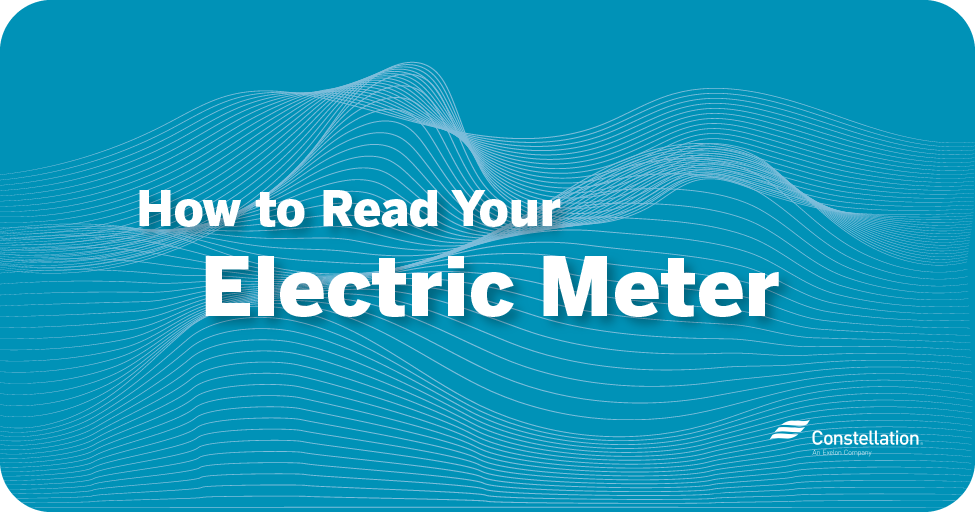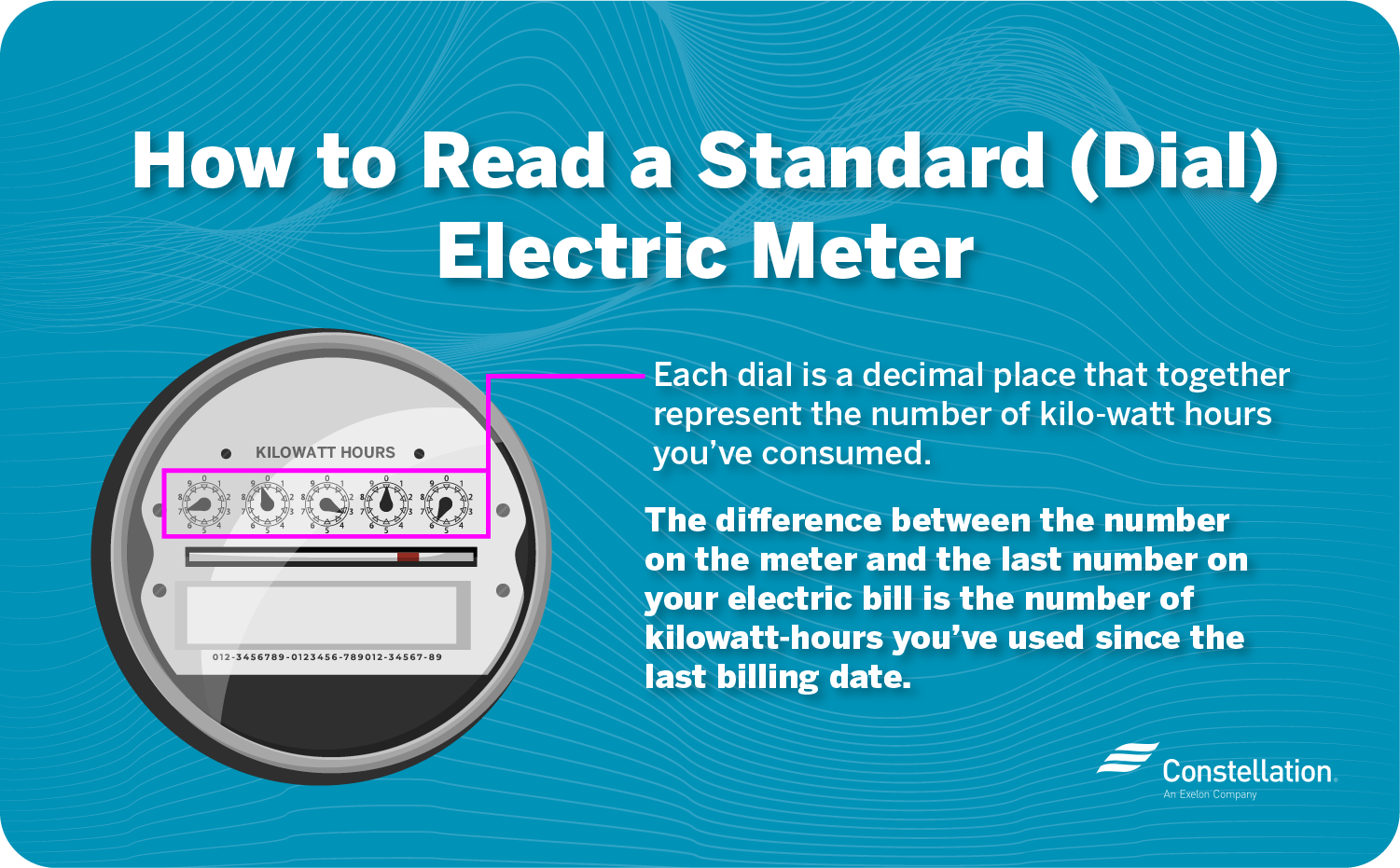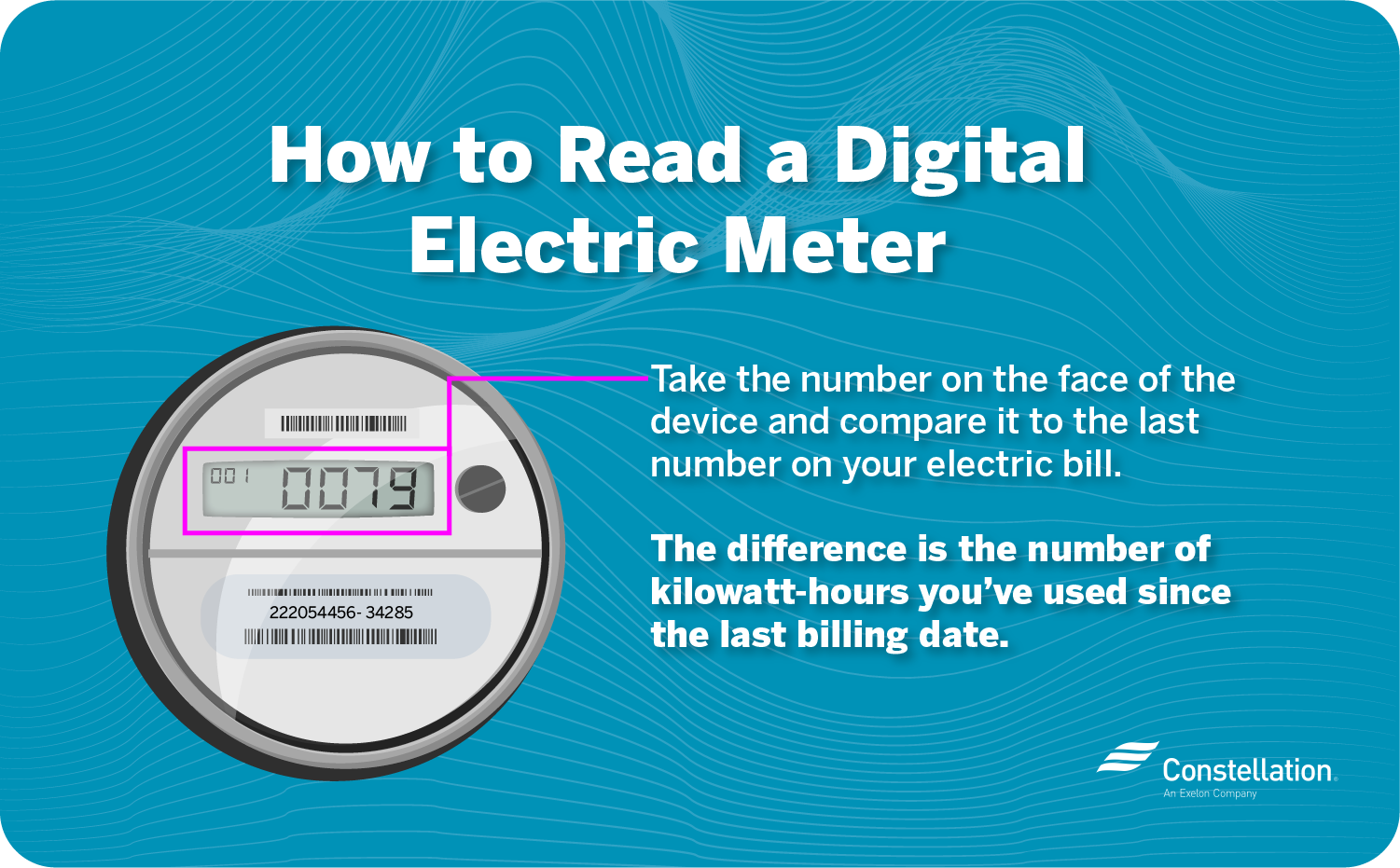
- Category:
Home Energy Savings -
Last updated:
September 7, 2021
How to Read Your Electric Meter
Learning how to read an electric meter lets you directly monitor your energy usage. In addition to eliminating surprises in your electric bill, you can take greater control of your rate of usage to help reduce waste and increase efficiency.
What is an electric meter?
Before explaining how to read an electric meter, it’s helpful to know what this device does. Essentially, it’s a piece of equipment that measures how much power you’re using. Most homes and businesses have just one meter. However, if you have separately wired systems and accounts, such as one system for your home usage and one that tracks usage by a business on the same property, you could have more than one meter.
Your power company will take an electric meter reading monthly to determine how much power you have consumed so they can calculate your bill. You might want to also explore how electricity works as you go about learning about how to read an electric meter.
What do electric meters measure?
With all of those spinning gears and dials, you might wonder, just what do electric meters measure? Power consumption is measured in kilowatt-hours. To give you an idea of what that means, consider that a 100-watt light bulb switched on for an hour consumes 0.1 kilowatt-hour. When thinking of ways to save energy, you’ll be measuring your progress in kilowatt-hours. You can find answers to the question of what is a kilowatt-hour in this blog.
Where is my electric meter located?
Average home power usage is measured with a meter installed somewhere outside the home, close to where the power comes into it. Apartment dwellers in a separately metered unit may find their meter somewhere inside the home. Basements and kitchens are common among inside residential electric meter locations.
Determining your electric meter readings
Though they can look complex, reading an electric meter is easy to understand. To make electric meter reading easier, turn off as many appliances in your home as possible so that the dials and numbers remain consistent while you’re taking the reading. It also doesn’t hurt to note the serial number on your meter and make sure that it matches the number of your utility bill.

How to read a standard (dial) electric meter
Most electric meters are older electromechanical devices that show five dials underneath a glass or plastic dome. Each dial is a decimal place that together represents the number of kilo-watt hours you’ve consumed.
For instance, if you have consumed 15,428 kilowatt-hours, the first dial on the left will be pointing between 1 and 2. The second dial over from the left will be pointing between 5 and six. Together, they count out 15,000 kilowatt-hours. The third dial represents the hundreds, and will be between 4 and 5. The fourth will be between 2 and 3, and the last one on the far right will be between 8 and 9. Taken together, that’s 428. All five dials are showing the numbers 1, 5, 4, 2 and 8 for 15,428.
Don’t be thrown by the fact that dials 1, 3, and 5 are numbered in a clockwise direction and dials 2 and 4 are counter-clockwise. That’s just how the gearing works within the device.
Compare the number on the meter to the last number on your electric bill. The difference between the two is the number of kilowatt-hours you’ve used since the last billing date.

How to read a digital electric meter
It’s easier to read a digital electric meter. All smart electric meters are digital meters. With a digital electric meter, you can clearly see one number on the face of the device — no reading a bunch of dials. That’s the number of kilowatt-hours you have used up to this very moment.
The most important thing to remember when you read a digital electric meter is that you need to pay attention to where the decimal point is so you don’t get a wrong reading. As with the standard meter, you’ll want to compare this number with the last number on your bill to determine how many kilowatt-hours you’ve used since then.
Using your electric meter reading to estimate energy usage
There’s a saying in business that you can’t manage what you can’t measure. If you are serious about your home’s energy usage, accurately reading your meter will be important. You can calculate your energy used per day by checking your meter twice, 24 hours apart. Multiply the power used measured in kilowatt-hours within that time period by the cost of each kilowatt-hour you pay to your power company. That’s how much money you owe for the power consumed that day. Multiply that by 30 to get a monthly number or by 365 to get an annual number.
Do I need to read my electric meter?
To get the best deal with your energy supplier and to use energy more efficiently in your home, you do need to know how to read your electric meter and to do so on a regular basis.
How often should I take meter readings?
If you’re looking to understand your energy usage patterns in detail, you might want to take an electric meter reading daily over the course of a week or so. If you’re looking for more general seasonal trends, you can do monthly readings. It all depends on what you’re trying to achieve.
The importance of getting an accurate meter reading
Getting an accurate electric meter reading is the key to making informed cost-saving decisions about your home’s energy efficiency.
- Compare your month-to-month energy usage. You can identify patterns in your electricity use habits, especially season to season. You may determine you can save money with a fixed-rate plan that evens out and possibly reduces the annual cost of the electricity you use.
- Understand where your energy costs are coming from. When you take control of tracking your energy usage, you can more easily determine what appliances and habits are driving up your costs.
- Determine strategies to conserve energy. When you know what’s driving usage and costs, you can make changes and adopt strategies that reduce both. For example, you could automate home appliances or change when you operate certain devices to a time of the day when energy is cheaper.
- Improve budgeting. No one likes to get surprised by an unexpected energy charge. By tracking your usage, you’ll know where you’re at any time of the month without having to wait for your utility bill.
- Check accuracy. While very rare, it’s possible to find a discrepancy in your bill, particularly if you have an older meter that must be read during a visit by the meter reader. Document readings to keep an accurate record that can clear up any mistakes.
When you learn what electric meters measure and how to read an electric meter, you’ll be able to better control your energy usage and reduce waste, while also creating the opportunity to increase efficiency.




